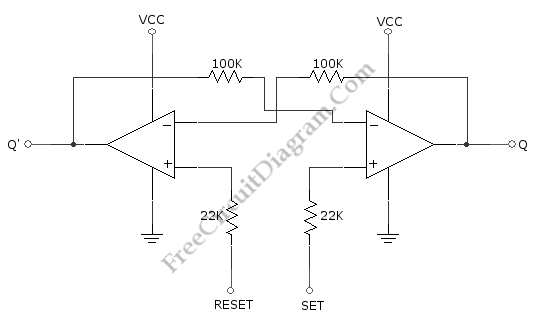Touch Sensitive RS Flip-Flop Using OP-AMP


This RS flip-flop is op-amp version of classic flip-flop which uses two inverting amplifier. The non-iverting input is floating, and we can assume that the voltage level of this floating pin is between VCC and ground, while the outputs will always be high or low. The high level of the output will be 1-2 volts below VCC, but this level is surely still above the level of floating non-inverting input. The low level of output will not exactly as low as the gound/zero level, but it surely below the floating non-inverting voltage level. With all of these conditions, the two inverting amplifier will lock each other into a stable state, both after reset and set. To set the circuit, just touch the “set” input to VCC while the “reset” input is floating. Resetting the circuit is done by touching the “reset” input to VCC while the “set” input is floating. We might think what will happen if we set both input to VCC at the same time, is it dangerous? No, the circuit will just give two active output on both Q and Q’, and will be back to normal if we set back to floating (the state will be random or depend on which input is kept to VCC longer).
Another way to apply this circuit is by using two regular push button switches for the inputs. Connect the inputs into about 0.5VCC (from a voltage divider for example), then connect a switch to short (when got pushed) between the plus input (directly on the pin) and the +VCC, each for set and reset path. This will give two outputs (Q and Q’) which we can use one or both. The set push button switch becomes the “ON” button and the reset push button switch becomes the “OFF” button. Sometimes it is more ergonomic to provide separate button for ON and OFF button because it can reduce the human error of accidentally switched some device on/off when the switch is just toggling.